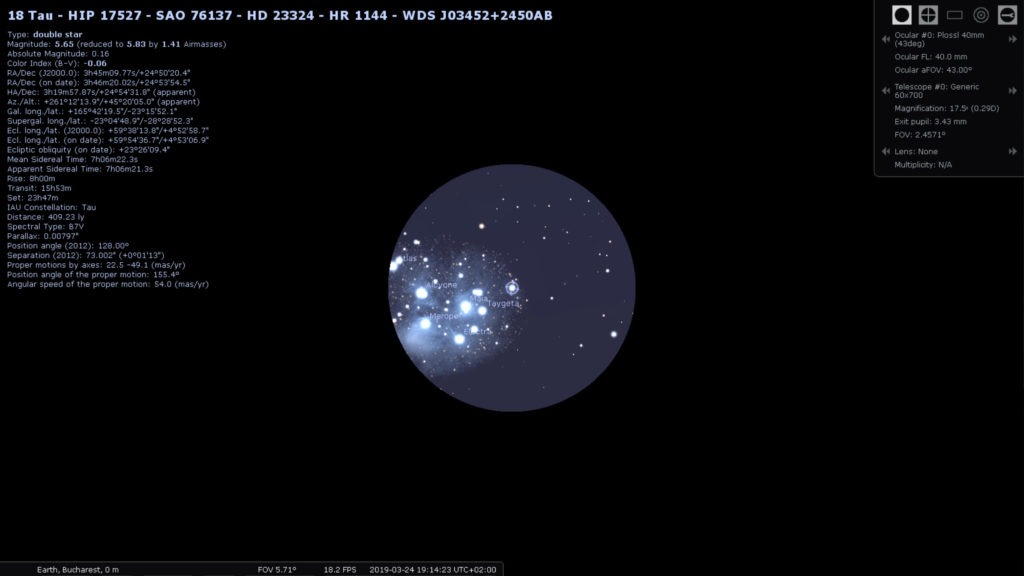

- #Stellarium eclipse simulation archive
- #Stellarium eclipse simulation software
- #Stellarium eclipse simulation professional
- #Stellarium eclipse simulation zip
The Sun won't pass between the Earth and the Moon in the near future, because the Sun is so much further away from the Earth, than the Moon.
#Stellarium eclipse simulation archive
#Stellarium eclipse simulation software
#Stellarium eclipse simulation zip
Introduced a new scripting language based on ECMAScript and GUI features for downloading star catalog updates.īug fixes for version 0.10.5, new solar system editor, time zone override, landscape zip installer.Ītmospheric refraction in the visualization of the sky. Start of the transition from SDL to Qt.Ī beta version that introduced a new GUI, but lacked scripting support as the engine was being recoded for the next release. Star catalogs were expanded with data from the Hipparcos Catalogue, the Tycho-2 Catalogue and the Naval Observatory Merged Astrometric Dataset (NOMAD). Introduced telescope control, using an external server program. Introduced features include constellation boundaries, multilingual interface (using gettext and Launchpad), output distortion for dome projection with a spherical mirror and home planet selection.īug fixes for version 0.8.0. Scripting and mouse navigation were introduced. Introduced the constellation art of Johan Meuris. Release history Versionįirst stable version to be released on. As of October 2010, the project is still in beta testing, and the last commit in the CVS repository was made in November 2009. Stellarium for Java is a Java fork or port of Stellarium, maintained by an independent team of developers, led by Jerome Beau.
#Stellarium eclipse simulation professional
VirGO is a Stellarium plugin, a visual browser for the European Southern Observatory (ESO) Science Archive Facility that allows astronomers to browse professional astronomical data. However, Digitalis Education Solutions, which helped develop Stellarium, created and now uses a fork called Nightshade which is specifically tailored to planetarium use. Several companies that build and sell digital planetarium systems use Stellarium, such as e-Planetarium. Such systems are generally cheaper than traditional planetarium projectors and fish-eye lens projectors and for that reason are used in budget and home planetarium setups where projection quality is less important. Spherical mirror distortion is used in projection systems that utilize a digital video projector and a first surface convex spherical mirror to project images onto a dome. The fisheye and spherical mirror distortion features allow Stellarium to be projected onto domes.

Extra catalogues with more than 210 million stars.Over 600,000 stars from the Hipparcos Catalogue and the Tycho-2 Catalogue.In December 2011, Stellarium was added as one of the "featured applications" in the Ubuntu Software Center. Ī modified version of Stellarium has been used by the MeerKAT project as a virtual sky display showing where the antennae of the radiotelescope are pointed. In 2006, Stellarium 0.7.1 won a gold award in the Education category of the Les Trophées du Libre free software competition.


 0 kommentar(er)
0 kommentar(er)
